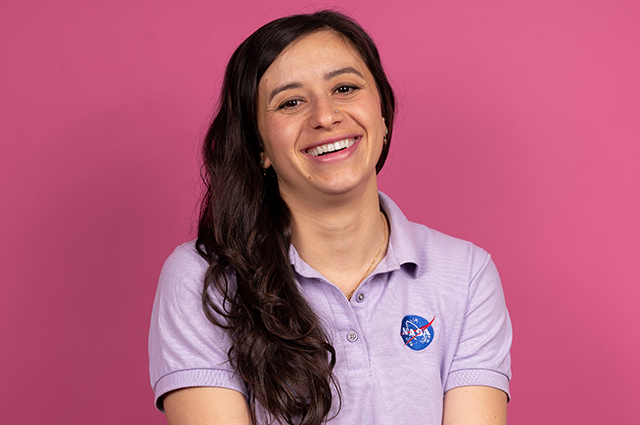Diagnosing spacecraft faults from a distance

When Evana Gizzi joined the NASA Pathways program in 2018, her first order of business was to gather information. She spoke to staff from across missions and teams at Goddard Space Flight Center to get the lay of the land. “Artificial intelligence is very new for Goddard,” says Gizzi, a Tufts PhD candidate in cognitive science who found herself brainstorming ways that her research in artificial intelligence (AI) could support NASA missions. Through interviews and informal conversations with Gizzi, NASA staff shared problems that they face. Ground controllers, for instance, must diagnose problems from a vast distance when a spacecraft on a mission experiences an unforeseen fault.
There is little room for error in NASA’s multimillion (or billion) dollar missions planned over the span of years, and the latency inherent in space travel further complicates matters – if the craft experiences an unforeseen problem or ground controllers make a mistake, it could take days to find out and then even more time to fix it. The spacecraft goes into safe mode and must wait for a diagnosis and the implementation of a solution, losing valuable science data collection time. “It’s a uniquely conservative domain,” says Gizzi. “You can’t mess up and you can’t work through problems using trial and error. You can’t make fixes in real time.”
These challenges weren’t new to Gizzi. She has been collaborating with NASA colleagues since 2016 and had two NASA internships and a grant project under her belt before she joined the Pathways program, which provides students with paid work experience and the opportunity for permanent employment at the agency. Gizzi had that prior experience at NASA, but this was the first time she had had the opportunity to build a project from the ground up.
What was needed, she saw, was a system that could diagnose spacecraft faults in real time. Currently, human input is necessary when it comes time to make inferences about complicated situations. Automated spacecraft fault diagnosis requires (1) simple physics and (2) problems that engineers and scientists are already aware of. As described in a recent NASA article on Gizzi’s work: “The spacecraft simply knows that if ‘A’ happens, respond by doing ‘B.’ What the spacecraft cannot do is figure out what caused these events, especially in unexpected fault cases: whether the spacecraft entered Earth’s shadow or a micrometeoroid damaged a circuit.”
Leading a team of civil servants, contractors, and undergraduate interns, Gizzi developed AI software that could make these crucial inferences. Called Research in Artificial Intelligence for Spacecraft Resilience (RAISR), the software combines AI techniques and machine learning. While machine learning relies on data about past faults, AI is able to facilitate reasoning when anomalies and new situations arise.
The next step for RAISR is serving as the fault mitigation element of an internal Radical Innovation Initiative (RI2) effort, which will develop an advanced mission concept for a distributed spacecraft mission with the goal of flying a constellation of small spacecraft to Jupiter’s moon Europa to observe transient water plumes. As for Gizzi, in addition to leading the fault mitigation element of that distributed spacecraft mission, she plans to complete her Tufts PhD this year and go on to a full-time position at Goddard Space Flight Center. She is the case study lead for a National Science Foundation (NSF) Established Program to Stimulate Competitive Research (EPSCoR) grant, which strengthens STEM capacity and provides research-based resources in targeted underserved states. She is challenging students to beat RAISR using purely machine learning, to facilitate further understanding of the strengths of machine learning and where it falls short.
Gizzi’s research success at NASA launched from her experience at Tufts. “The interdisciplinary approach that Tufts has for computer science – I don’t think you can find a lot of that at other universities,” she says. “The program is big enough to have interesting research, but small enough where you don’t get lost in the weeds.” The tightly knit Department of Computer Science community has provided support when Gizzi needed it, alongside opportunities to call the shots and take the lead as a graduate student.
While Gizzi’s PhD advisor Jivko Sinapov, James Schmolze Assistant Professor in Computer Science, is not directly involved with her work at NASA, his support was transformational. “Jivko changed my life,” Gizzi says. “He was the first person in my PhD career to trust me in a position of power. Without him, I don’t know if I would have believed in myself.”
Gizzi wants others to see a way forward for themselves through her experience. “There is so much untapped talent out there. Don’t listen to what other people say is possible. It’s not true.” The path will be more difficult for those who face additional roadblocks or don’t start out with the resources to succeed, but everything is possible, Gizzi says, with the right support. “Everyone deserves a chance.”
Department:
Computer Science